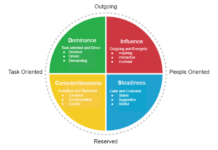
What exactly does it mean to be a “people person?” It’s a loaded term that people impart a lot of meaning to.
Here’s what you probably mean when you say that you want to be a better people person – you want to be able to blend in seamlessly among any crowd and make them like you.
That’s really the gist of it.
But the way to achieve that loft goal goes far beyond surface level thinking of “I’m going to be funny” or “I’m going to be nice and compliment them.” If you go about it that way, then you’re only as good as your last joke or compliment. That’s not being a people person, that’s appeasing others and brown nosing.
Here are 4 tips to dig deeper and truly become a people person – the chameleon who can slither into people’s hearts.
1. Leave your position in the Belief Police.
What’s the Belief Police? Well, you know how some people just won’t stop trying to change your mind about your taste, opinions, or beliefs? You know, things that are objectively subjective and will be different for each person?
Some people feel the need to patrol people’s thoughts and make sure that they either believe “acceptable” things or agree with them.
We’ve all encountered people like this before. Hey, I get that Forrest Gump isn’t the greatest movie in the world, but why are you making me feel bad for liking it?
Revoke your membership in the Belief Police.
2. Stop giving unsolicited opinions or advice.
When someone is ranting angrily, you know the last thing they want to hear? Advice on how to fix the situation.
The vast majority of the time, our opinions or advice are hugely unsolicited. This is especially true when people speak emotionally. Often, they just want to be heard and validated – a simple “Wow, that sucks” will do wonders.
People often know the issue AND the solution, but just want a simple catharsis. By butting in with your advice, you deny them that and sometimes their pent up emotion will be sprayed onto you.
3. Be agreeable… with boundaries.
Some people are too agreeable – to the point of being doormats that we step over without giving a second thought to.
Others have too many boundaries – they are strict and rigid, and must have their own way.
How do you straddle this line? By simply letting other people be right most of the time, unless there is a repeated pattern that affects you negatively. (Agreeable)
Then it’s a matter of thinking about why you put others needs in front of yours, why you dread confrontation, and what types of insecurity drive you to such accommodation. (Boundaries)
4. Find primary AND secondary self-interests.
This seems self-explanatory and common sense, but so does all good advice. You just don’t see or notice people doing it, so is it actually common sense?
Finding self-interests means taking a step back and thinking about what is driving and motivating a person in a particular situation. The primary self-interests are easy, but the secondary ones are harder to find yet often more important and convincing. They’re also usually just unstated and implied.
In an example as simple as debating which restaurant to pick, someone might call themselves a foodie and want a delicious meal – sounds like a primary self-interest. This doesn’t help anyone decide anything.
So it’s time to think about secondary self-interests – you can look at the wait time, the decor, the courtesy of the wait staff, or the distance from their home. Maybe this person is a lazy neat freak, so you would instead choose somewhere that is close to them and clean.
See how that brings you one level closer to them because you practice empathy and deliberately eliminate self-absorption?
For more ways to become the consummate people person, check out my book: People Tactics: Become the Ultimate People Person – Strategies to Navigate Delicate Situations, Communicate Effectively, and Win Anyone Over





